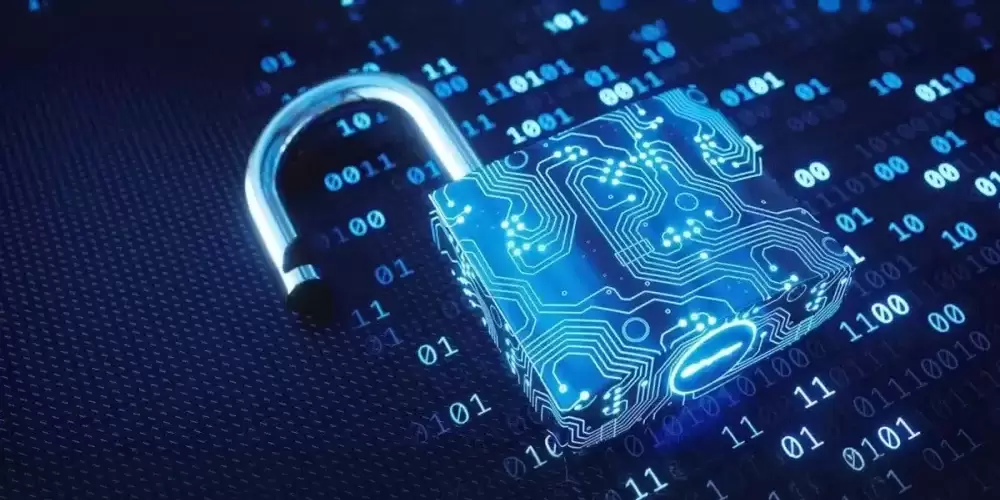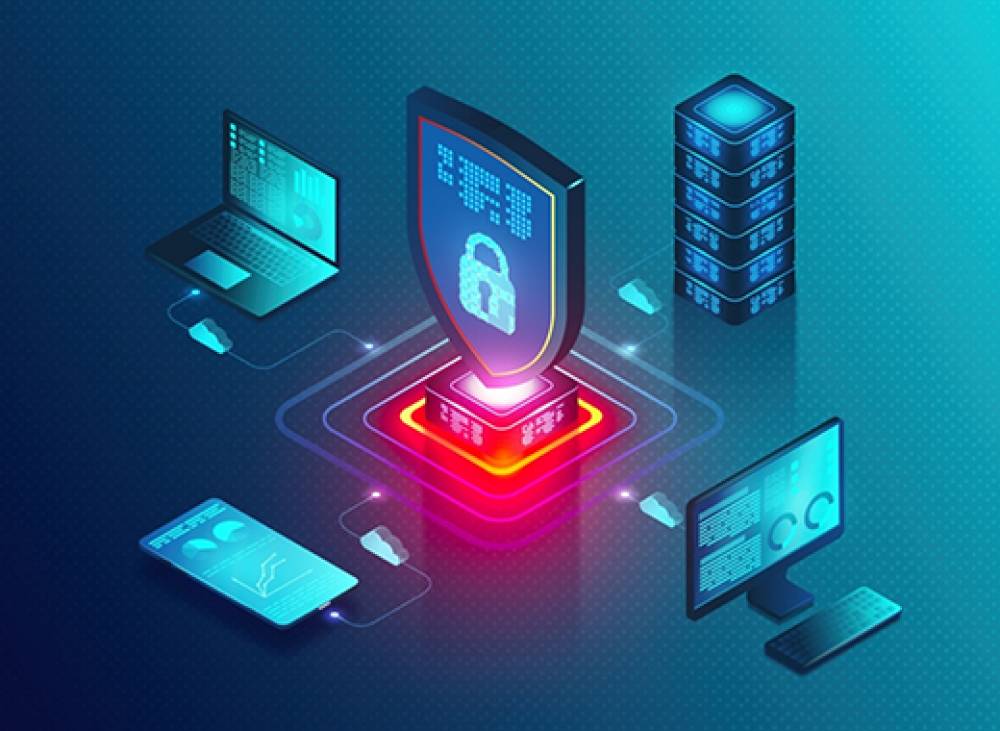With the effective use of the solution applications we recommend, the efficiency of your organization will increase and the necessary environment will be created for you to make the right decisions quickly in an increasingly competitive environment.
- Who are we ?
-
Our Solutions
Information Security Management Services
- Network Security
- Information Security Consulting
- Hotspot Solution
- Establishment of ISO 27001 Standard Infrastructure
- Personal Data Protection Services
- Logging and SIEM Solutions
- Microsoft Security Assessments
- Event Monitoring and Management Systems
- Penetration Testing Services
- End-User Security
- Database Security
Artificial Intelligence (AI) Systems
- Enterprise Software & Platform Development
- API Management and Integration Services
- Blockchain-Based Systems
- Cloud-Native Architecture and Development
- Digital Transformation-Oriented Innovation and R\&D Consulting
- Training, Support, and Transformation Consulting
- Fintech & Payment Systems Integrations
- IT Infrastructure, DevOps, and Security
- Customer Experience (CX) and User Interface (UI/UX) Design
- Internet of Things (IoT) Solutions
- Data Management, Advanced Analytics, and Business Intelligence Strategies
IT Infrastructure and Operations Services with Modern Solutions
- Maintenance & Repair Services
- Physical Security Services
- Secure Room Design & Installation
- Desktop Support Services
- MDM Solutions
- Server Support Services
- Data Center Design and Installation
- Data Center Migration Services
- Empower Your Business with Data Center Management and Storage Services
- Structured Cabling Services
IT Audit and KVKK Consultancy
- Compliance Consultancy for Law No. 5651
- Compliance Consultancy for Law No. 6698 (KVKK – Turkish Personal Data Protection Law)
- Information Technology Audit Consulting
- Pre-Audit Consultancy for ISO 22301
- ISO 27001 Pre-Audit Consultancy
- KVKK, Compliance, and Process Consulting
- Pre-Audit Consultancy for SKS
- Capital Markets Board (CMB) Pre-Audit Advisory Services
-
Our Solutions
-
Information Security Management Services
- Network Security
- Information Security Consulting
- Hotspot Solution
- Establishment of ISO 27001 Standard Infrastructure
- Personal Data Protection Services
- Logging and SIEM Solutions
- Microsoft Security Assessments
- Event Monitoring and Management Systems
- Penetration Testing Services
- End-User Security
- Database Security
-
Artificial Intelligence (AI) Systems
- Enterprise Software & Platform Development
- API Management and Integration Services
- Blockchain-Based Systems
- Cloud-Native Architecture and Development
- Digital Transformation-Oriented Innovation and R\&D Consulting
- Training, Support, and Transformation Consulting
- Fintech & Payment Systems Integrations
- IT Infrastructure, DevOps, and Security
- Customer Experience (CX) and User Interface (UI/UX) Design
- Internet of Things (IoT) Solutions
- Data Management, Advanced Analytics, and Business Intelligence Strategies
-
IT Infrastructure and Operations Services with Modern Solutions
- Maintenance & Repair Services
- Physical Security Services
- Secure Room Design & Installation
- Desktop Support Services
- MDM Solutions
- Server Support Services
- Data Center Design and Installation
- Data Center Migration Services
- Empower Your Business with Data Center Management and Storage Services
- Structured Cabling Services
-
IT Audit and KVKK Consultancy
- Compliance Consultancy for Law No. 5651
- Compliance Consultancy for Law No. 6698 (KVKK – Turkish Personal Data Protection Law)
- Information Technology Audit Consulting
- Pre-Audit Consultancy for ISO 22301
- ISO 27001 Pre-Audit Consultancy
- KVKK, Compliance, and Process Consulting
- Pre-Audit Consultancy for SKS
- Capital Markets Board (CMB) Pre-Audit Advisory Services
- Digital Transformation and Consulting Services
- Business Continuity and Risk Management Consulting
- Data Centre Server Hosting Services
- IT Consultancy Services
- IT Security Services
- Software and Support Services
- Data Protection Law Consultancy
-
Information Security Management Services
- Blog
- Communication

Cybersecurity and Network Security
By, Miraç Hicranlı
- 5th July 2024
-
7303
In today’s rapidly digitalizing world, the importance of cybersecurity continues to grow. Companies and individuals alike are taking various security measures to protect their sensitive data and keep their networks secure. In this article, we will provide a general overview of cybersecurity and discuss network security devices, explaining how these technologies work and why they are crucial.
What is Cybersecurity?
Cybersecurity is the practice of protecting computer systems, networks, devices, and data from cyber attacks. This process involves various technologies, processes, and practices designed to prevent, detect, and respond to malicious activities. The main goals of cybersecurity are to ensure the integrity, confidentiality, and availability of data.
Network Security Devices
To ensure network security, various devices and technologies are used. These devices are designed to monitor, analyze, and intervene in network traffic to protect against unauthorized access and threats. Here are some common network security devices:
Firewall:
-
Firewalls are devices that control network traffic and prevent unauthorized access. They can be both hardware and software. Firewalls filter incoming and outgoing traffic based on predetermined security rules, ensuring that only secure and authorized connections are allowed.
Intrusion Detection System (IDS) and Intrusion Prevention System (IPS):
-
IDS monitors network traffic to detect suspicious activities, while IPS goes a step further by blocking and preventing those activities. These systems help maintain proactive network security.
Virtual Private Network (VPN):
-
VPNs enable users to establish secure and encrypted connections over the internet. This is particularly important for remote workers. VPNs minimize the risk of data theft and unauthorized access by transmitting data through a secure tunnel.
Antivirus and Antimalware Software:
-
These programs protect computer systems and networks from viruses, trojans, ransomware, and other malicious software. Continuously updated antivirus software protects against new threats and removes malicious software.
Unified Threat Management (UTM):
-
UTM devices combine multiple security functions into a single device. They offer comprehensive security by integrating firewall, IDS/IPS, antivirus, VPN, web filtering, and more.
Best Practices in Cybersecurity
Updates and Patch Management:
-
Regularly updating systems and software helps close known security vulnerabilities.
Strong Password Policies:
-
Using complex and strong passwords makes unauthorized access more difficult. Implementing two-factor authentication (2FA) also enhances security.
Education and Awareness:
-
Training employees on cybersecurity and increasing awareness helps prevent human errors.
Backup:
-
Regularly backing up data ensures that it can be quickly restored in the event of data loss.
Network Monitoring:
-
Continuously monitoring network traffic and detecting anomalies helps identify potential threats early.
Conclusion
Cybersecurity and network security devices are essential in today’s digital world for both businesses and individuals. These technologies are crucial for protecting networks and data from cyber attacks. A good cybersecurity strategy should be supported by the effective use of security devices and continuous updates.
For more information on cybersecurity and to get support for your security solutions, please contact us. We are here to help you maximize the cybersecurity of your business.


 Cybersecurity and Network Security
Cybersecurity and Network Security


